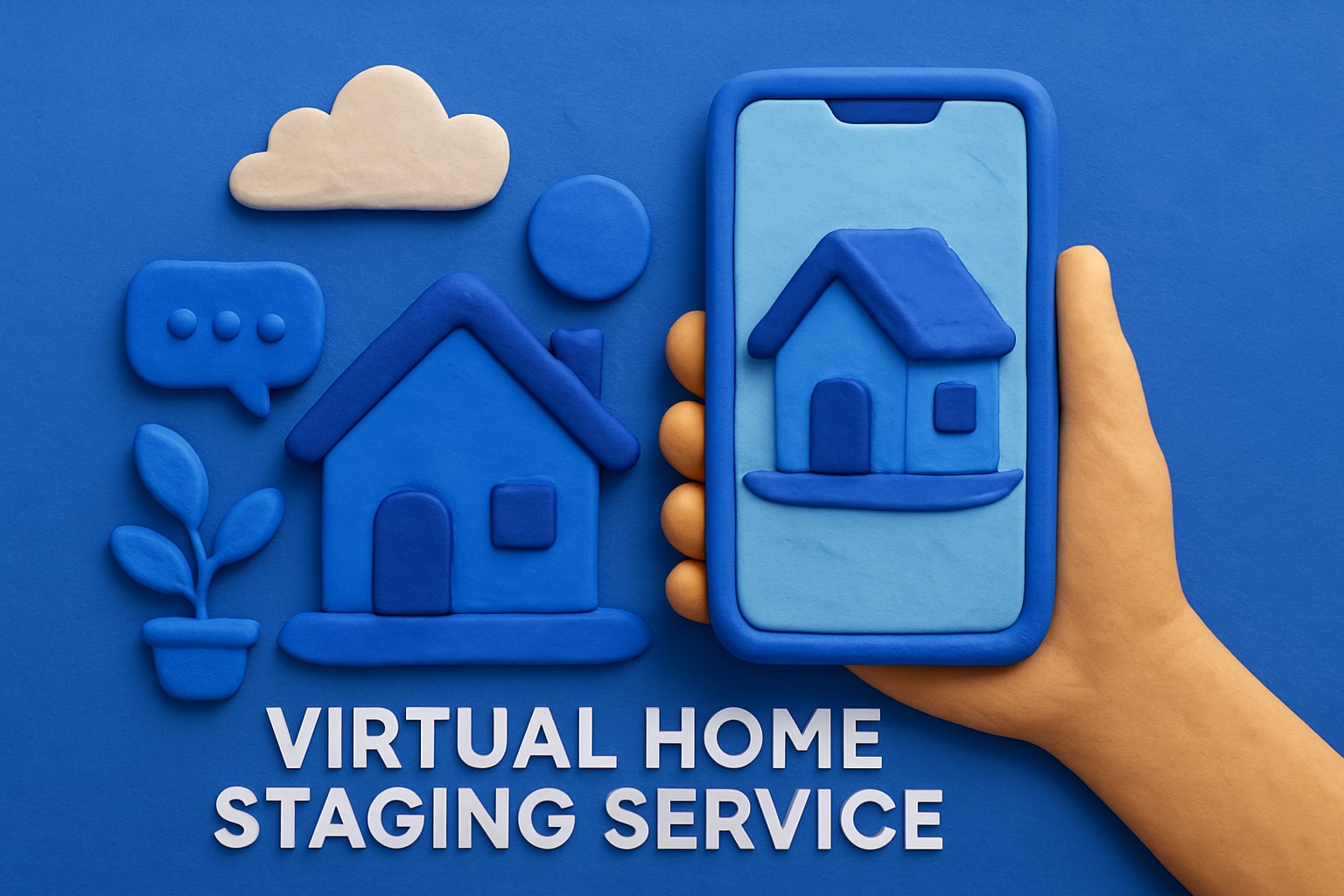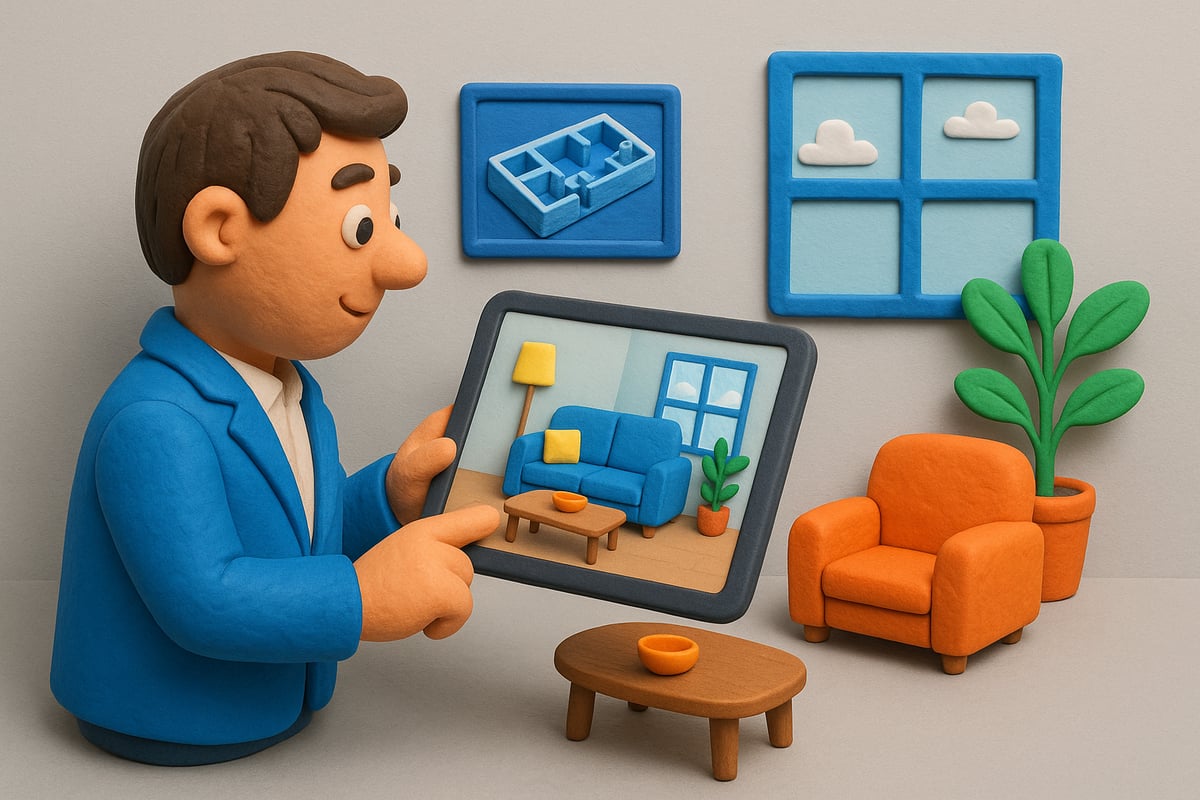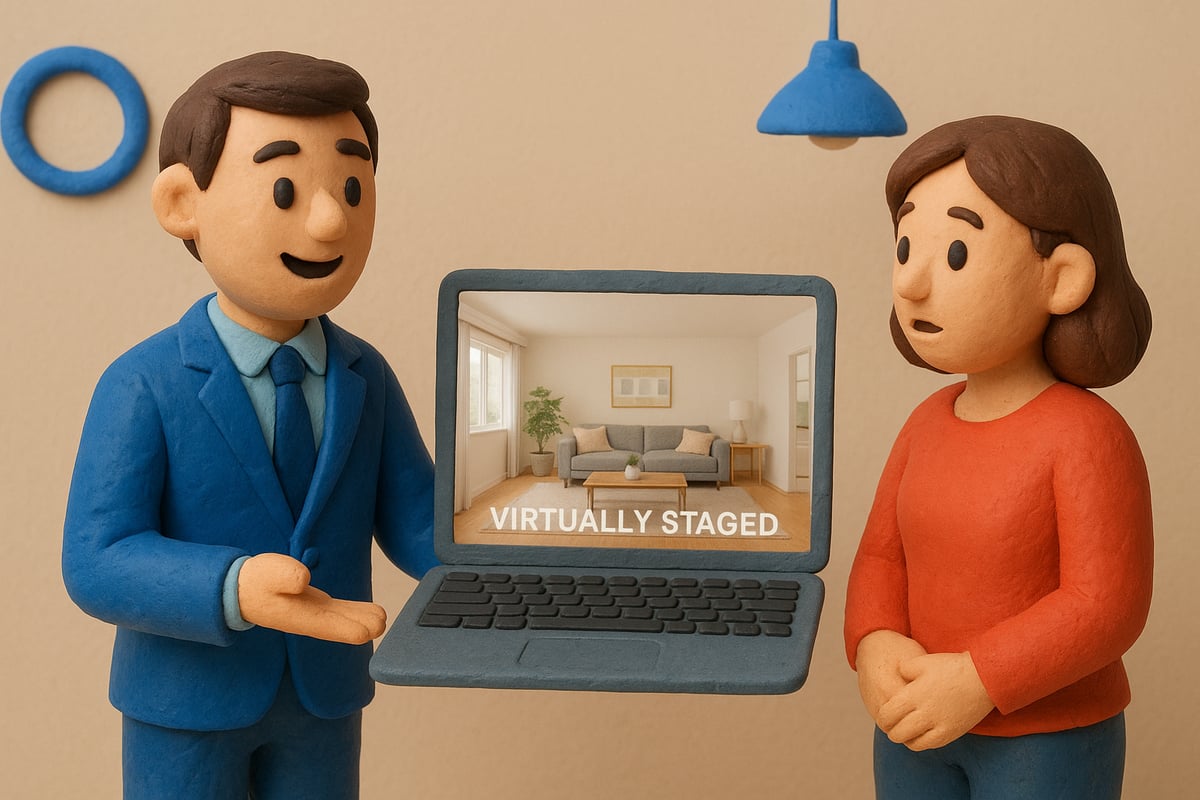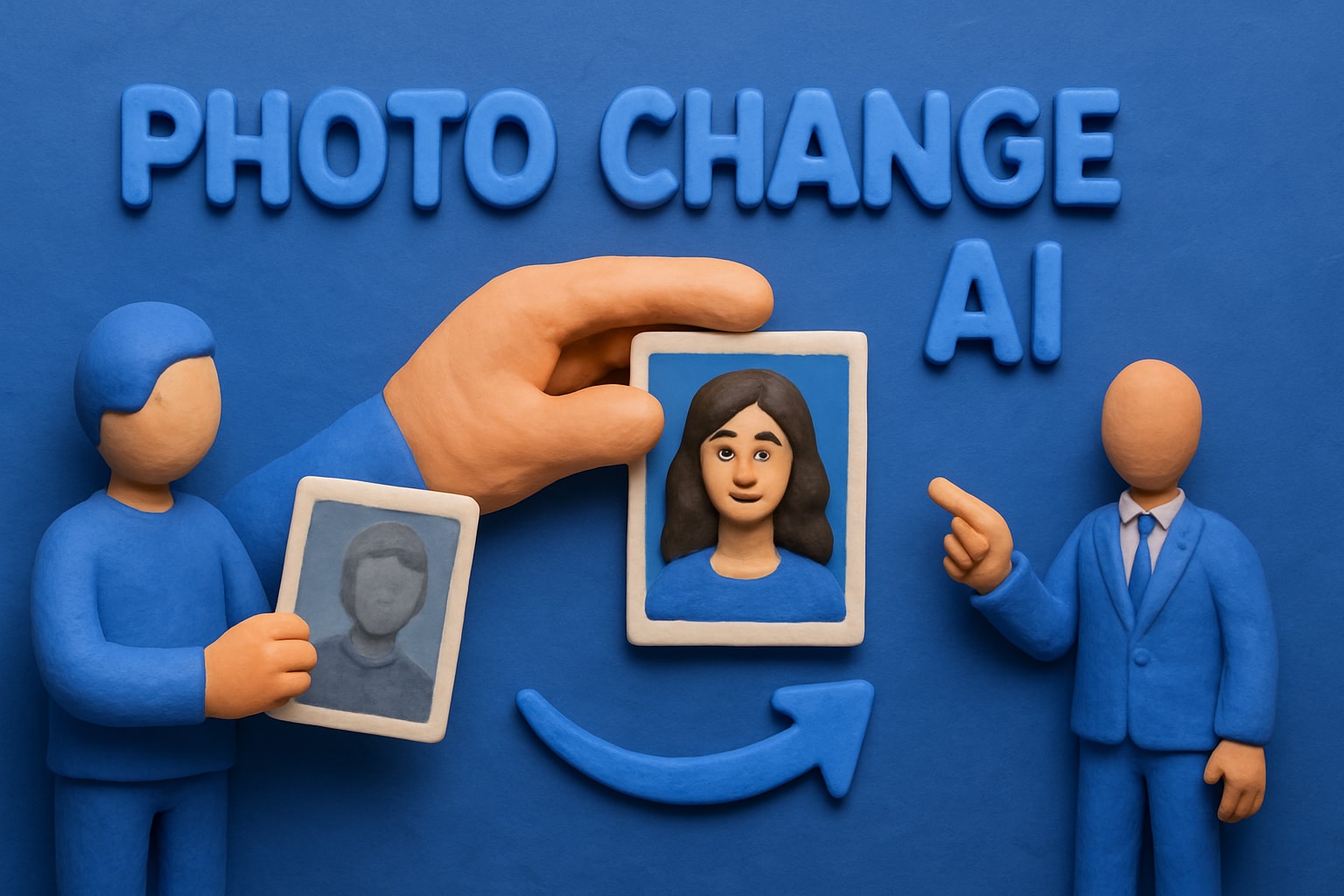Oct 21, 2025
9 Essential Virtual Home Staging Service Tips for 2025

The real estate landscape is transforming at lightning speed, and in 2025, embracing a virtual home staging service is no longer optional for staying competitive. As buyers expect immersive and visually stunning online experiences, mastering a virtual home staging service gives real estate professionals a distinct edge.
This guide reveals nine essential tips to help you maximize the impact of your virtual home staging service. Ready to captivate buyers, boost engagement, and sell listings faster? Start implementing these expert strategies today.
The Rise of Virtual Home Staging in 2025
The real estate industry is entering a new era, where the virtual home staging service is quickly becoming the gold standard for property marketing. As we approach 2025, agents and sellers are seeking innovative strategies to appeal to modern buyers. Understanding the evolution from traditional methods to advanced digital solutions is crucial for staying competitive in this fast-changing landscape.

The Shift from Traditional to Virtual Staging
Traditional home staging once dominated real estate marketing, but its high costs and logistical hurdles have caused a rapid decline. Physical staging often requires weeks of planning, moving furniture, and significant investments, averaging over $2,000 per property. In contrast, a virtual home staging service delivers photorealistic results for only $50 to $200 per listing, saving not just money but also valuable time.
According to the National Association of Realtors, more than 85 percent of buyers say that listing photos are the most important factor in deciding which homes to visit. With a virtual home staging service, properties can be showcased to their full potential, even when vacant or outdated. For a deeper look at the dramatic cost savings, consider that virtual staging reduces costs by 97% compared to traditional methods.
| Staging Type | Average Cost | Time Required |
|---|---|---|
| Physical Staging | $2,000+ | 1–2 weeks |
| Virtual Staging | $50–$200 | 24–48 hours |
This significant difference makes the virtual home staging service an accessible tool for agents of all scales.
Technology Transforming Real Estate Marketing
New technologies are reshaping the virtual home staging service landscape. Artificial intelligence, 3D modeling, and AR/VR capabilities now allow for hyper-realistic digital makeovers that were unimaginable just a few years ago. Leading software platforms use advanced rendering engines to create visuals nearly indistinguishable from real photography.
This technological leap boosts engagement. Recent data from Redfin reveals that listings enhanced with a virtual home staging service see a 40 percent increase in online engagement. Tools now offer batch processing, customizable templates, and even interactive 3D walkthroughs, making it easier than ever for agents to deliver compelling visuals.
By embracing these innovations, real estate professionals can transform empty spaces into inviting, aspirational homes that connect emotionally with buyers. The virtual home staging service is not just a trend—it is becoming essential for modern marketing.
Buyer Expectations in 2025
Today’s buyers are more tech-savvy and visually oriented than ever before. In 2025, most expect immersive, interactive experiences when browsing listings. The virtual home staging service must deliver high-quality, mobile-friendly images that look great on any device.
Buyers want to envision themselves in a space instantly. Interactive elements, such as 360-degree tours and AR overlays, are becoming standard. Successful campaigns show that listings featuring a virtual home staging service not only attract more views but also spark more inquiries and faster sales.
Real-world examples highlight how a thoughtfully staged digital room can transform a buyer’s perception and drive decision-making. For agents, mastering the virtual home staging service is now key to meeting, and exceeding, the expectations of the modern property shopper.
9 Essential Virtual Home Staging Service Tips for 2025
In 2025, standing out in real estate means mastering every detail of your virtual home staging service. Whether you are a seasoned agent or just starting, these nine expert tips will help you unlock the full potential of virtual staging. From prioritizing image quality to staying on top of design trends, each strategy is designed to maximize listing impact, attract more buyers, and accelerate sales. Ready to transform your listings? Let’s dive in.

1. Prioritize High-Quality, Realistic Images
The foundation of a successful virtual home staging service is photorealistic imagery. Buyers expect visuals that feel authentic, and anything less can damage trust instantly. Advanced AI and 3D rendering tools now allow you to create images that rival actual photography. When using your virtual home staging service, always aim for impeccable detail—accurate lighting, natural textures, and believable shadows.
Compare a room staged with grainy, poorly lit images to one staged with crisp, lifelike visuals. The difference is night and day. Before-and-after comparisons often reveal how photorealism can make a property feel inviting and modern, while subpar images leave buyers questioning what’s real.
Key tips for realism:
- Use high-resolution source photos.
- Adjust lighting to match the property’s natural ambiance.
- Pay attention to furniture scale and placement.
- Ensure shadows and reflections are consistent.
Remember, listings with low-quality virtual staging can lose credibility fast. Investing in a top-tier virtual home staging service pays off by capturing attention and building buyer confidence.
2. Understand Your Target Buyer Demographics
Every market is unique, and your virtual home staging service must reflect the tastes of your ideal buyers. Start by researching local demographics—age, lifestyle, and preferences all play a key role. Are you targeting millennials looking for minimalism, or empty nesters seeking comfort and warmth? The style and layout chosen for your virtual home staging service should align with these expectations.
Use buyer personas and local trend data to guide decisions. For instance, a downtown loft may benefit from sleek, modern staging, while a suburban family home could shine with cozy, functional layouts. Segment your audience and stage accordingly.
Tips for demographic targeting:
- Analyze recent sales and buyer feedback.
- Adjust color palettes and decor to match buyer preferences.
- Highlight features important to your audience, such as home offices for remote workers.
By tailoring your virtual home staging service to specific buyers, you increase engagement and make listings feel truly personalized.
3. Highlight Key Selling Features of the Property
A great virtual home staging service does more than fill a room with furniture. It strategically draws attention to a property’s most valuable features. Whether it’s an open-concept kitchen, a breathtaking view, or a cozy fireplace, your staging should make these highlights shine.
Use your virtual home staging service to address awkward or underused spaces. Transform a bare nook into a reading corner or an empty wall into a gallery display. Clear visual cues help buyers imagine the possibilities.
Effective strategies include:
- Focusing staging efforts on high-impact rooms.
- Using virtual callouts or captions to spotlight features (where platform allows).
- Keeping layouts clutter-free to avoid distractions.
A well-executed virtual home staging service guides the buyer’s eye, ensuring they remember the property’s best assets long after viewing the listing.
4. Maintain Consistency Across All Marketing Channels
Consistency is key when using a virtual home staging service. Your staged images should match what buyers see at in-person showings and across all marketing materials. Mismatched visuals can cause confusion or even disappointment.
Align your virtual home staging service output with your brand’s aesthetic. Choose a consistent color palette, furniture style, and overall vibe for your website, social media, and print collateral. This cohesion builds trust and strengthens your professional image.
Checklist for consistent staging:
- Use the same set of staged images on every platform.
- Update visuals promptly if you restage or make changes.
- Coordinate with photographers and designers to maintain style alignment.
A seamless experience from online listing to open house is what sets your virtual home staging service apart in a crowded marketplace.
5. Leverage AI-Powered Editing Tools for Efficiency
Time is money in real estate. Modern virtual home staging service platforms harness AI to speed up the staging process without sacrificing quality. With batch processing and prompt-based editing, you can stage multiple rooms in hours instead of days.
Top AI-powered tools offer user-friendly interfaces, making it easy for agents to customize and iterate quickly. Case studies show that agents using AI-driven virtual home staging service solutions reduce turnaround times dramatically and can respond to market changes in real time.
Key advantages of AI tools:
- Automated furniture placement and style recommendations.
- Quick adjustments for lighting, angle, and decor.
- Integration with listing platforms for direct uploads.
Choosing the right virtual home staging service with robust AI features ensures your listings stay fresh and competitive.
6. Disclose Virtual Staging Transparently
Transparency is essential when using a virtual home staging service. Buyers must know which images are virtually staged to avoid misunderstandings or disappointment at showings. Legal and ethical guidelines require clear labeling on all staged visuals.
Best practices for disclosure:
- Add a “virtually staged” watermark or text overlay to each image.
- Include disclaimers in listing descriptions.
- Communicate openly with buyers and agents about what has been digitally enhanced.
Honest disclosure protects your reputation and ensures your virtual home staging service builds trust instead of skepticism. Avoid legal pitfalls by always being upfront about digital modifications.
7. Optimize Images for Online Platforms and Mobile Devices
Most home searches begin online, often on smartphones. Your virtual home staging service should deliver images that load quickly and display flawlessly on any device. Technical optimization is critical for engagement.
Tips for optimal image delivery:
- Use the recommended resolution and aspect ratio for each platform.
- Compress files for fast loading without sacrificing clarity.
- Test images on various devices to ensure crisp visuals.
Interactive features like 360° tours or AR overlays can further elevate your virtual home staging service, providing immersive experiences that captivate tech-savvy buyers.
8. Keep Up with Design Trends for 2025
Design trends evolve rapidly, and your virtual home staging service must keep pace to stay relevant. In 2025, expect to see more biophilic design, sustainable materials, and smart home features in demand. Staging with trendy color schemes and innovative furniture makes listings feel current and desirable.
Stay informed by following resources like Virtual staging tips and trends, which regularly update on what’s hot in the industry. Use this insight to select decor and layouts that speak to today’s buyers.
Trending ideas for 2025:
- Incorporate greenery and natural textures.
- Highlight energy-efficient appliances and tech integrations.
- Use modular, multi-functional furniture.
A trend-forward virtual home staging service positions your listings ahead of the competition.
9. Measure Results and Continuously Improve Your Approach
A data-driven approach is vital for any virtual home staging service. Track key metrics such as listing views, inquiries, time on market, and final sale price. Use A/B testing to compare different staging styles and layouts, identifying what resonates best with your audience.
Request feedback from buyers and agents after showings. Real-world case studies often reveal that properties optimized with ongoing virtual home staging service refinements sell faster and at higher prices.
Metrics to monitor:
| Metric | Before Staging | After Staging |
|---|---|---|
| Views | 300 | 500 |
| Inquiries | 5 | 12 |
| Days on Market | 45 | 28 |
| Sale Price | $450,000 | $470,000 |
Continuous improvement keeps your virtual home staging service agile and effective, ensuring every listing reaches its full potential.
Choosing the Right Virtual Staging Service Provider
Selecting the right virtual home staging service is a pivotal decision for any real estate professional aiming to stay competitive in 2025. With so many providers available, it is essential to assess your options carefully to ensure your listings stand out and drive results.

Criteria for Evaluating Providers
When choosing a virtual home staging service, focus on several core criteria. Review the provider's portfolio for quality and consistency. Turnaround time is critical, especially in fast-moving markets. Pricing should align with your budget but also reflect value for the quality delivered. Evaluate the technology stack, such as AI-enhanced editing tools or 3D modeling capabilities.
| Criteria | What to Look For | Questions to Ask |
|---|---|---|
| Portfolio | Photorealistic, diverse samples | Can you show recent virtual staging work? |
| Turnaround Time | Fast, reliable delivery | What is your typical turnaround time? |
| Pricing | Transparent, competitive rates | Are there hidden fees or add-ons? |
| Technology | Advanced tools and software | What platforms and tech do you use? |
A high-quality virtual home staging service will be transparent about their process and happy to address these points.
Customer Support and Revision Policies
Strong customer support is essential. Look for providers offering clear communication channels, responsive service, and flexible revision policies. Some virtual home staging service companies include a set number of free revisions, while others may charge for each adjustment. Ensure you understand the terms before committing.
A provider that values your feedback and offers multiple opportunities for revisions will help you achieve the desired look for each property. This level of support can be the difference between a good and a great virtual home staging service experience.
Key Questions to Ask Before Hiring
Before finalizing your choice, prepare a list of targeted questions:
- How do you handle special requests or unique property features?
- Can you accommodate urgent listings or last-minute changes?
- What is your process for ensuring photorealism and accuracy?
- Are your staged images optimized for MLS, Zillow, and mobile platforms?
- Do you offer integration with real estate software or listing platforms?
These questions help ensure the virtual home staging service aligns with your business needs and listing workflow.
Red Flags to Watch Out For
Be cautious of providers promising extremely low prices or instant delivery. Unrealistic pricing often signals shortcuts in quality or hidden fees. Lack of transparency about their portfolio or process is another warning sign. Poor online reviews or unresponsiveness to inquiries should also raise concerns.
- Unclear pricing structures
- No visible portfolio or references
- Negative client testimonials
- Limited or no customer support
Choosing a reputable virtual staging for real estate provider helps you avoid these pitfalls while maximizing the value of your investment.
Integration with Real Estate Platforms
Ensure your chosen virtual home staging service can seamlessly integrate with major platforms like MLS, Zillow, or Redfin. This integration streamlines your workflow, allowing you to upload, edit, and update staged images efficiently. Compatibility with these systems ensures your listings appear polished and professional across all channels.
A provider with platform integration capabilities will save you time and reduce the risk of inconsistencies between your online and offline marketing materials.
Legal and Ethical Considerations in Virtual Home Staging
Navigating the legal and ethical landscape is crucial for any real estate professional using a virtual home staging service. As technology advances, industry standards for transparency and accuracy are becoming more stringent.
Regulations now require that listings clearly disclose when images have been virtually staged. This is not just a best practice, it is a necessity to avoid misleading buyers. Failing to indicate that a photo was enhanced by a virtual home staging service can result in buyer disappointment or even legal challenges. To comply, always use watermarks or captions stating “virtually staged” on altered images.
Honest representation in marketing materials is vital. Misrepresentation can lead to disputes, especially if buyers feel deceived by differences between staged photos and real-life viewings. In recent years, several agencies have faced legal action for omitting disclosures, highlighting the importance of clear, upfront communication when utilizing a virtual home staging service.
By prioritizing ethical practices and adhering to disclosure guidelines, real estate professionals can build trust, protect their reputation, and ensure a smooth transaction process for all parties involved.

Future Trends in Virtual Home Staging and Real Estate Marketing
The future of real estate marketing is bright, with virtual home staging service innovations leading the way. In 2025 and beyond, AI-driven personalization will allow agents to tailor staging to individual buyer preferences, while AR and VR home tours will create immersive, interactive experiences.
Data analytics will play a crucial role in refining every virtual home staging service, helping professionals make data-backed decisions for maximum impact. For deeper insights into how AI is shaping these advances, explore AI virtual staging insights. Staying on top of these trends ensures your marketing remains both relevant and competitive.
As you've seen, mastering virtual home staging in 2025 is all about combining the latest AI technology with design expertise to create truly engaging property listings. By applying these nine essential tips, you can capture buyers' attention, showcase each home's unique features, and stay ahead in a rapidly evolving market. If you're ready to elevate your listings with precision and efficiency, why not explore advanced tools designed just for this purpose? Take the next step toward transforming your real estate marketing—Make magic!
Ready to jump in?
Experience the power of AI-driven image editing with Weezard AI. Professional results in seconds.

